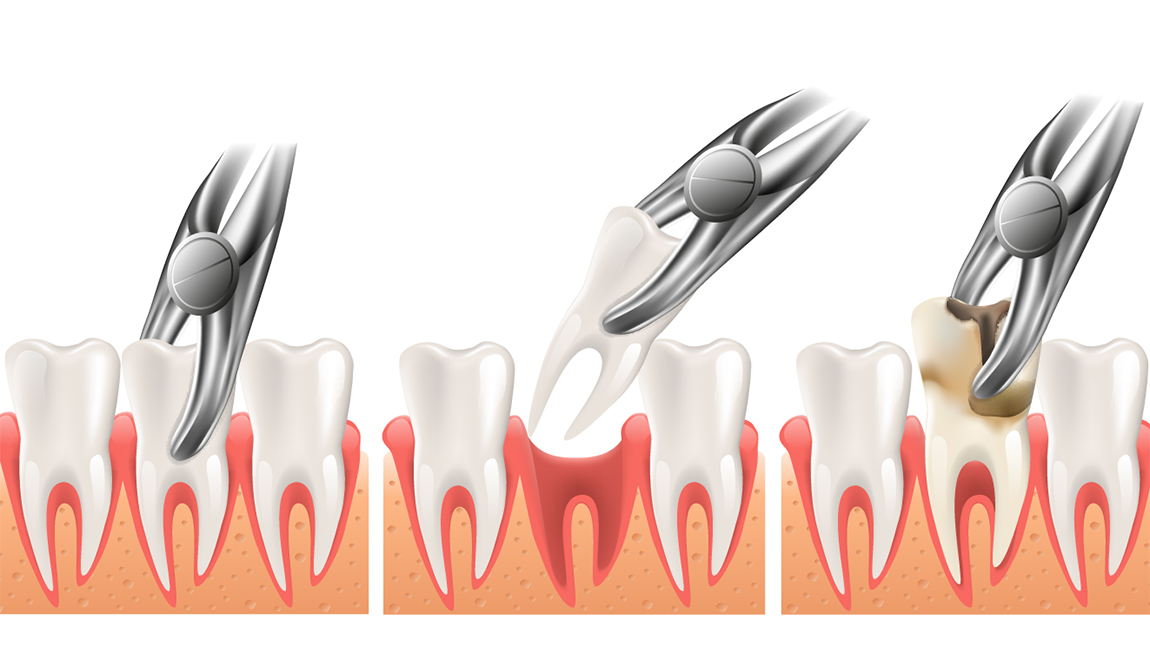Good oral hygiene should always be practiced since the loss of a single tooth can have a major impact upon your oral health and appearance. Although dentists will use every measure to prevent tooth loss, there are still some necessary occasions when a tooth may need to be extracted. A tooth may need to be extracted if the following occurs:
*Severe decay
*Advanced periodontal disease
*Infection or abcess
*Orthodontic correction
*Malpositioned teeth
*Fractured teeth or roots
*Impacted teeth
After careful examination and treatment, the dentist may advise to have a tooth extracted. Before a tooth is removed, the dentist will take an x-ray in order to understand the shape and position of the tooth and surrounding bone. Based on the degree of difficulty, we may refer you to a specialist called an oral surgeon.
For a simple extraction, we will first apply a local anesthetic to prevent pain and discomfort. The tooth will be loosened with a tool called an elevator and then removed with dental forceps. Once the procedure is complete, the area may be closed with one or two stitches.
It is critical to keep the extraction area clean to prevent infection. We will provide you with dry, sterile gauze to bite down on for 30-45 minutes to limit bleeding while clotting takes place. For the next 24 hours, you shouldn’t smoke, rinse your mouth vigorously, or brush teeth directly next to the extraction site.
A certain amount of pain and discomfort is to be expected following an extraction, which can be minimized with a pain killer and ice packs applied to the face for 15 minutes at a time. After a routine extraction, discomfort should lessen within three days to two weeks. If you have prolonged or severe pain, swelling, bleeding or fever, call our office immediately.

